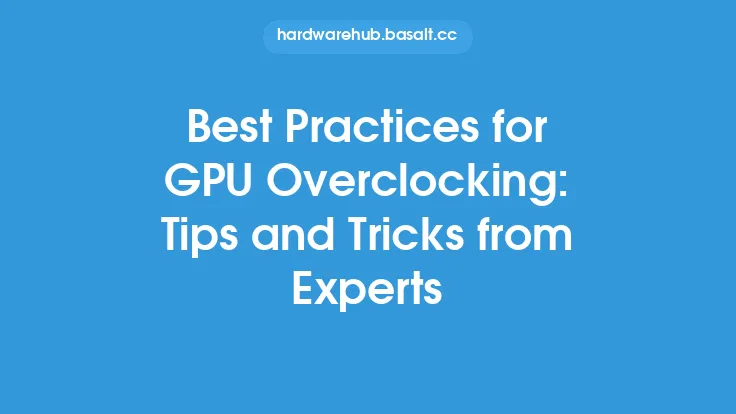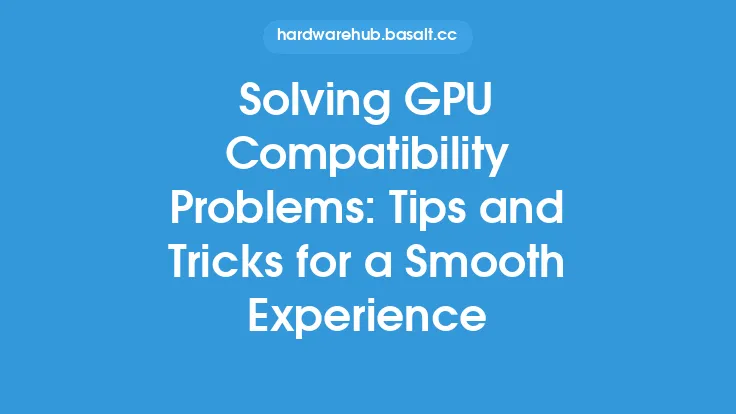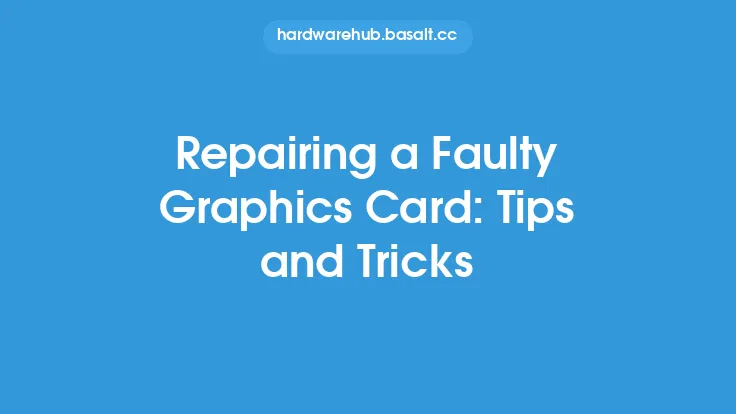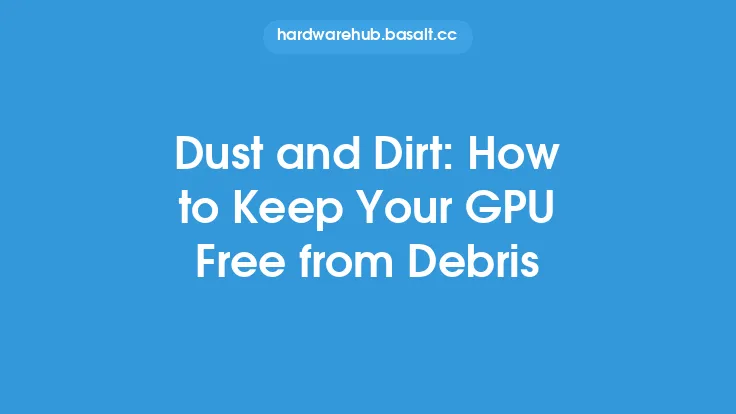When it comes to maintaining the health and longevity of your graphics processing unit (GPU), there are several key factors to consider. One of the most critical aspects of GPU maintenance is preventing damage to the device. This can be achieved through a combination of proper handling, regular maintenance, and careful monitoring of the GPU's operating conditions. In this article, we will explore the various ways in which you can prevent damage to your GPU and ensure that it continues to function at its best.
Understanding GPU Damage
GPU damage can occur in a variety of ways, including physical trauma, overheating, power surges, and exposure to dust and debris. Physical trauma can result from dropping the GPU or subjecting it to excessive stress, such as bending or flexing the circuit board. Overheating can cause damage to the GPU's internal components, including the graphics processing core, memory, and voltage regulators. Power surges can also cause damage to the GPU, particularly if the power supply is not capable of providing a stable and consistent voltage. Finally, exposure to dust and debris can cause damage to the GPU's cooling system and other internal components.
Preventing Physical Damage
To prevent physical damage to your GPU, it is essential to handle it with care. This includes avoiding touching the GPU's electrical components, such as the pins and connectors, and avoiding subjecting the GPU to excessive stress or trauma. When handling the GPU, it is also essential to ensure that it is properly grounded to prevent static electricity damage. This can be achieved by touching a grounded metal object or wearing an anti-static wrist strap. Additionally, it is recommended to store the GPU in a protective case or bag when not in use to prevent damage from dust and debris.
Managing Operating Temperatures
Managing the operating temperature of your GPU is critical to preventing damage. The ideal operating temperature for most GPUs is between 60°C and 80°C. If the temperature exceeds this range, it can cause damage to the GPU's internal components. To manage the operating temperature, it is essential to ensure that the GPU has adequate cooling. This can be achieved through the use of a high-quality cooling system, such as a heat sink or liquid cooling system. Additionally, it is recommended to monitor the GPU's temperature using software or hardware monitoring tools to ensure that it remains within a safe operating range.
Power Management
Power management is also critical to preventing damage to your GPU. This includes ensuring that the power supply is capable of providing a stable and consistent voltage to the GPU. A power supply that is not capable of providing a stable voltage can cause damage to the GPU, particularly if it is subjected to power surges or spikes. To prevent power-related damage, it is recommended to use a high-quality power supply that is capable of providing a stable voltage. Additionally, it is recommended to use a power conditioner or surge protector to protect the GPU from power surges and spikes.
Monitoring and Maintenance
Regular monitoring and maintenance are essential to preventing damage to your GPU. This includes monitoring the GPU's temperature, voltage, and performance to ensure that it is operating within a safe range. Additionally, it is recommended to perform regular cleaning and maintenance tasks, such as cleaning the GPU's cooling system and applying thermal paste to the GPU's heat sink. By monitoring and maintaining your GPU regularly, you can identify potential issues before they cause damage and take steps to prevent them.
Advanced Techniques
For advanced users, there are several techniques that can be used to prevent damage to the GPU. These include overclocking, which involves increasing the GPU's clock speed to improve performance, and undervolting, which involves reducing the GPU's voltage to reduce power consumption and heat generation. However, these techniques require careful monitoring and adjustment to ensure that the GPU is not subjected to excessive stress or heat. Additionally, advanced users can use software tools to monitor the GPU's performance and adjust its settings to optimize its performance and prevent damage.
Conclusion
Preventing damage to your GPU requires a combination of proper handling, regular maintenance, and careful monitoring of its operating conditions. By understanding the causes of GPU damage and taking steps to prevent them, you can ensure that your GPU continues to function at its best. This includes handling the GPU with care, managing its operating temperature, ensuring proper power management, and monitoring and maintaining its performance regularly. By following these tips and techniques, you can prevent damage to your GPU and ensure that it provides optimal performance for years to come.





